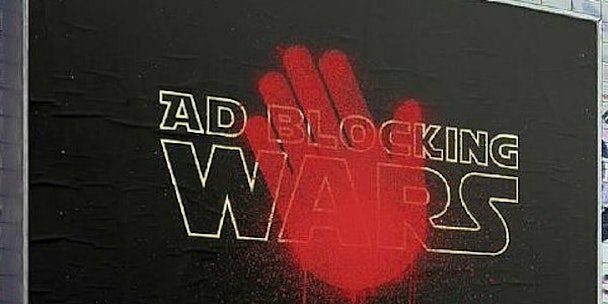'It's time to start listening,' how media, tech and creative agencies can finally beat the ad blockers
‘We know who you are.’ Digitally this is becoming increasingly true, the levels of tracking, cookies and data that we willingly, semi-willingly or totally unwittingly give away allows everyone to be segmented into increasingly precise and targeted groups. Even if it wasn’t all over the news and the subject of various documentary programmes, it is plain to see for anyone who has ever even considered using the web as research tool, let alone to actually buy something.

One brand or another will be stalking you around the internet trying to remind or persuade you to buy the thing that you ordered 12 hours ago and has now already been delivered and opened. Alternatively, you spent just a moment too long recoiling in horror at a product for that extra second to be misinterpreted as a sign indicating that was an item so vital your life you need constantly reminding about it.
All of this will be dependent on how far through the cookie lifecycle you are and how much spare advertising inventory the sites you have chosen to browse have available.
In the real world, in most cases, the more we get to know someone the more we cherish that relationship, we understand their likes and dislikes and we are more in tune and aligned to them. The relationship deepens, the trust increases and slowly but surely there is little that can’t be openly discussed.
The mismatch between these two scenarios and the way in which it is brutally demonstrated to people on a daily basis is the reason behind the rapid rise in ad blocking and why as digital creative businesses we must start taking this more seriously.
Many people reading this may well be aware of ad blocking, many indeed may have been using ad blockers for some time, but the acceleration and scale of the impact that this is having is worth highlighting.
Before the well-publicised decision by Apple to allow ad blocking apps late last year, the PageFair and Adobe 2015 Ad Blocking Report estimated that the cost of ad blocking to publishers’ revenues will double in 2016 to $41 billion, a number that must now seem like an underestimate. Especially when you consider that mobile network Three just announced that it will introduce ad blocking across its UK and Italian networks, stating that its customers pay for data charges so should not receive ads.
Cynically, as the UK’s only provider of an unlimited data package, you might say this also helps Three to reduce the cost of service provision to their data hungry customer base.
Whatever the motivations for ad blocking it is clear that as an industry of advertisers and marketers we have abused our relationship with the people who matter most, the customers and audiences that we spend so much time and money trying to engage. The irony is, on too many occasions, we have done it through thoughtless bad advertising, the like of which so many studies have shown erodes brand value, the one thing we should be trying to create.
There are many voices including Fortune.com that suggest that this should be a call to creativity, and whilst I agree that the days of considering digital advertising purely as a direct response medium must be consigned to the history books, this requires more than just a traditional advertising creative response.
The sophistication and technical possibility of display advertising has evolved significantly but lag behind in one significant area – the ability to respond to feedback. In social channels the relationship with advertising is a little more two-way, especially in the highly visual channels such as Instagram. In display advertising we have chosen to conveniently ignore the warning signs of any relationship – a lack of dialogue.
The traditional view would be that the cost of developing creative executions for the vast array of customer profiles that the data is producing is not a cost effective ROI model. However, that is not taking into account the various hidden costs of that very audience rejecting the concept of that advertising and using an ad blocker. Or alternatively the cost of ad blockers holding advertisers to ransom to access an audience, turning to native advertising or content and starting the cycle of not providing consumers with what they want all over again.
What we need is a closer co-operation between media, technology and creative agencies to deliver solutions that listen more closely to the digital signals from our audiences and use creative and tech to respond in a far more appropriate manner. We also need put the true value of the audiences we are trying to reach into the modelling that we provide to clients. It is in publishers and advertisers’ best interests to demand these sort of solutions from their agencies.
We need to use this disruption to place a more meaningful value on the people that we want to engage with and the creativity of the messages we serve to them. It is time to start listening.
Buster Dover is managing director at MullenLowe Profero London and member of the IPA's Brand Tech Group which provides an industry view on the impact technology is having on brands, consumers and agencies.
